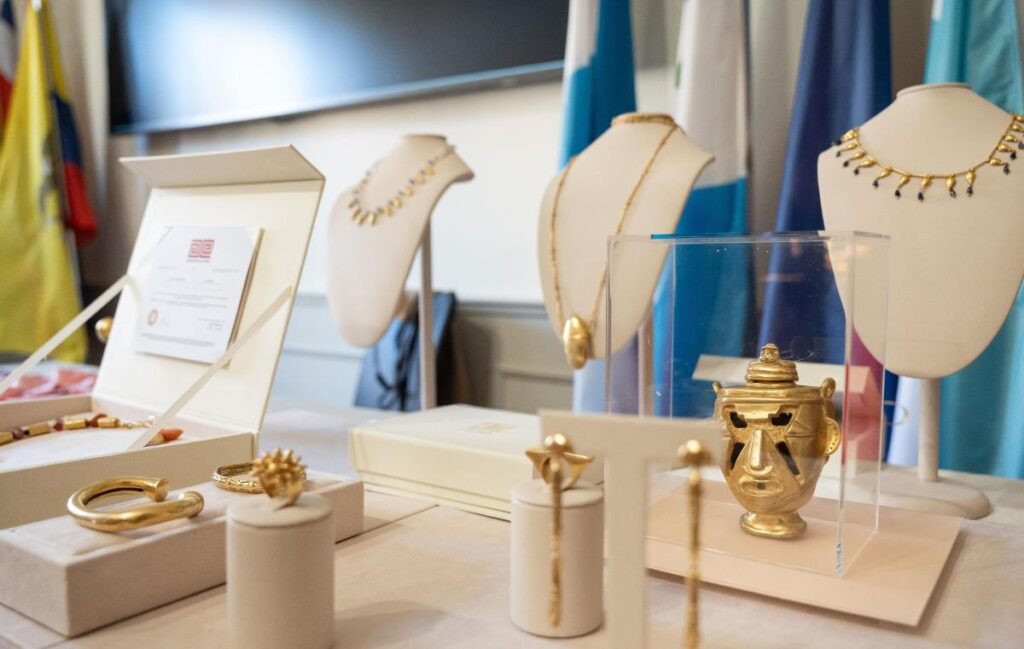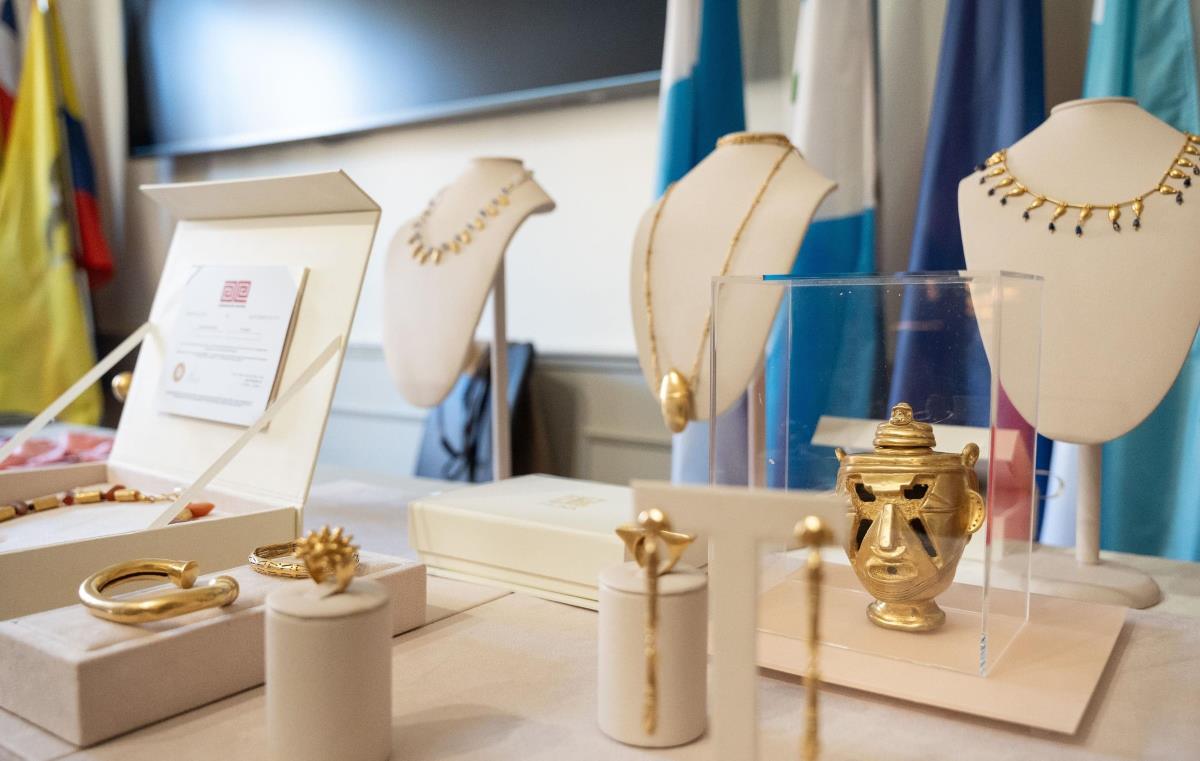
Colombia’s Foreign Minister inaugurated the exhibition “Gold and Coca Leaf” in Italy, aiming to redefine the cultural meaning of coca. Credit: Colombian Ministry of Foreign Affairs
Colombia’s Minister of Foreign Affairs, Rosa Yolanda Villavicencio, inaugurated in Rome the traveling exhibition “Gold and Coca Leaf: Beyond Colonial Thought and Contemporary Stigmatization,” an ambitious project that brings together art, ancestral heritage, and cultural diplomacy. The exhibition, which will tour nine European countries —including Italy, Austria, Spain, Poland, France, Portugal, the Netherlands, the Czech Republic, and Finland— will run until December 2025. With this initiative, Colombia seeks to redefine the symbolism of the coca leaf and promote a renewed understanding of traditional knowledge and the cultural richness of the Andean nation.
What is the Colombian exhibition “Gold and Coca Leaf” about?
The exhibition offers a profound reexamination of the Western perspective on the coca leaf, a plant historically stigmatized due to its association with drug trafficking and illicit economies. Through a contemporary artistic language, the show reclaims the spiritual, medicinal, and cultural value that the coca plant holds for Colombia’s Indigenous communities.
Visitors can appreciate works by renowned Colombian artists. Among them, Omar Hurtado stands out with a collection of 56 gold pieces of jewelry and ceremonial objects, exact replicas of the Quimbaya Treasure, originally gifted to Spain in 1893 as a diplomatic offering. These works depict Indigenous figures, ritual artifacts, and symbols of spiritual power, reflecting the technical mastery and symbolic depth of pre-Columbian goldsmithing.
Meanwhile, artist Tatiana Arocha contributes a visual and sound installation that explores ecology, collective memory, and ancestral knowledge, bridging the past with the environmental and cultural challenges of the present.
During the opening ceremony, Minister Villavicencio emphasized the significance of the exhibition as a form of cultural diplomacy. “This exhibition invites us to reflect on the narratives that have shaped our history and the need to build a new relationship with our heritage,” she stated during her address.
Art, repatriation, and ancestral memory
Beyond promoting Colombian art, the exhibition also sparks a conversation on the restitution of cultural artifacts that were unjustly acquired by international museums in past centuries. This element transforms the show into a platform for dialogue on cultural sovereignty and justice, reinforcing Colombia’s commitment to preserving its heritage and honoring the memory of Indigenous peoples.
During the opening event, Villavicencio expressed gratitude to the Government of Italy and the Carabinieri Corps for their support in the repatriation of more than 280 archaeological pieces to Colombia —a gesture she described as “a demonstration of cooperation and respect for the shared history between both nations.”
The exhibition “Gold and Coca Leaf” aligns with the Colombian government’s strategy to advance a cultural foreign policy that promotes artistic exchange, collective memory preservation, and the recognition of cultural diversity as fundamental pillars of sustainable development.
